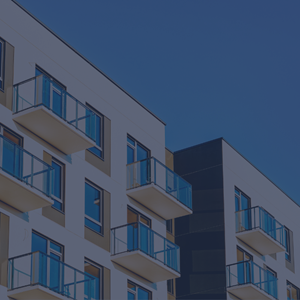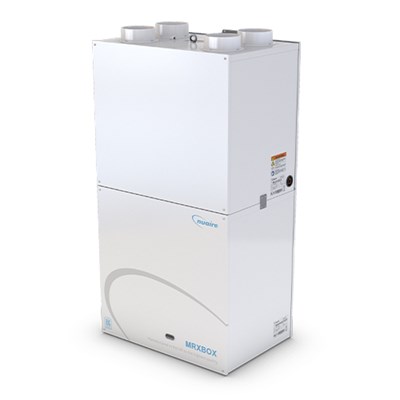
Permitted Development Rights: a hot housing issue
8.5 million people in England alone are facing an unmet housing need, according to the National Housing Federation, 2 million of whom are children. Whilst the pressing need to increase housing supply is pretty much universally acknowledged, how to achieve this remains a heated debate.
Permitted Development Rights (PDR) emerged as a fast-track response to the UK’s housing crisis. From 2013, PDRs have allowed for change of use for buildings in commercial, business and service use to a dwellinghouse, without the need for planning permission from the local planning authority (LPA). Nor are they subject to full Building Regulations.
By allowing commercial buildings to be repurposed as residential units in this way, they offer a speedy solution to increasing the housing stock. Between 2015/16 and 2022/23, 102,830 new homes were created in England through change-of-use PDRs, which is approximately 6% of the net additional homes delivered since 2015/16.
Has PDR created more problems than it solves?
No one is claiming that homes created through PDR will solve the housing crises, but 1.8 million new homes is not an inconsequential number. However, the nature of these homes has come under close scrutiny.
A 2020 study commissioned by the government found that homes created through PDRs resulted in “worse quality residential environments” than those that required LPA planning permission. Both the researchers of this report and the Housing Communities and Local Government Committee expressed concerns that some homes delivered through PDRs were of poor quality, in unsuitable places and not the type of housing actually needed.
When it comes to quality, by sidestepping the usual regulatory frameworks, PDR conversions often escape the rigorous checks designed to ensure homes are safe and comfortable. Critically, they are exempt from Part O of Building Regulations, which addresses overheating in residential dwellings and aims to protect the health and wellbeing of occupants by reducing the occurrence of high indoor temperatures. This exemption leaves thousands of homes at risk, specifically those transformed from office buildings with sealed façades and extensive glazing—architectural legacies that can work against thermal comfort.
A 2023 survey on PDR housing and health published by UCL showed that only 63% of respondents were able to keep comfortably cool during hot summer weather and 14% cited a lack of fresh air in the dwelling to be a problem.
Insurance company Zurich UK states: “Office to flat conversions are at increased risk of serious overheating due to poor design, including a lack of appropriate ventilation and shading. The danger is greatest in tiny, self-contained bedsits and studio type flats that could potentially become uninhabitable during increasingly hot summers.”
Climate data confirms the risk is growing
Overheating in UK homes is no longer an emerging concern—it is a documented crisis. This year has been the driest January to June for England since 1976. Spring 2025 is the UK’s warmest and sunniest on record, with June the second warmest for the UK since records began in 1884. The Met Office is warning that “UK heatwaves could become longer and hotter due to escalating climate trends, with an estimated 50-50 chance of seeing 40°C again in the UK in the next 12 years.”
According to the Chartered Institution of Building Services Engineers (CIBSE), a predominantly mechanically ventilated home overheats when internal temperatures exceed 26°C for more than 3% of annual occupied hours. The situation is worsening as climate change accelerates. The State of the UK Climate Report 2024 shows the UK is warming at a rate of approximately 0.25°C per decade. 2023, 2022 and 2018 are among the UK’s top-ten warmest summers in records back to 1884.
These temperature extremes have serious implications. There were 2,985 heat-associated deaths in 2022, the year that saw the highest recorded temperature in England, according to The UK Health Security Agency. This figure is the highest since recording began. Beyond the health risks, overheating affects mental wellbeing and economic productivity.
Conversions can’t rely on natural ventilation
The core challenge with PDR projects is that they often repurpose buildings designed for a completely different occupancy. Former offices were not built to house people 24/7. They typically feature large glazed facades, minimal external shading, and restricted natural ventilation. In densely built-up urban heat islands, where many of these buildings are located, opening windows – if they can be opened that is - may not be an option due to noise, air pollution, or security risks. These environmental constraints effectively render passive ventilation strategies unworkable.
Part O prescribes maximum glazed areas on facades (depending on orientation), encourages the use of solar shading and glass with lower g-values to limit solar gains, whilst setting minimum openable window areas so that excess heat can be passively ventilated away. But in the case of PDR schemes, this requirement is not mandatory, leaving developers to comply only with the bare minimum ventilation requirements stipulated by Part F. The result is a proliferation of homes that are technically compliant yet thermally dysfunctional.
Mechanical ventilation can offer a viable solution
At Nuaire, we work extensively with sustainability engineers carrying out dynamic thermal modelling simulations to asses overheating risk in new build developments. Elevated mechanical ventilation rates and Mechanical Ventilation with Heat Recovery (MVHR) with hybrid cooling must be trialled before a designer can consider resorting to air conditioning and this approach really should be considered in PDR conversions, even if it’s not a requirement.
MVHR systems offer a practical and effective approach to meeting Part F and can also assist in improving thermal comfort. MVHR not only preconditions air and filters out pollutants but also provide summer bypass functions which can be used in combination with elevated airflows to provide free cooling when external temperatures are favourable. These systems can help maintain acceptable indoor temperatures year-round and are still regarded as passive means in approved document O.
Where window openings are limited and insufficient to naturally ventilate excess heat, standard MVHR systems may not suffice. Here, a Nuaire Hybrid Cooling unit which works in tandem with our MRXBOX MVHR could potentially assist in mitigating overheating. Such systems activate when indoor temperatures exceed a threshold—typically 23°C—and introduce pre-cooled fresh air to help maintain occupant comfort, though the potential effectiveness of such a system should be assessed through dynamic thermal modelling. From a user’s perspective, it operates seamlessly and discreetly, avoiding the cost, complexity, and visual impact of conventional air conditioning systems.
A call for regulatory reform and industry leadership
The urgent need to reform overheating policy is becoming widely recognised. The House of Commons Environmental Audit Committee recently recommended expanding Building Regulations Part O to include refurbishments and material change-of-use projects. Furthermore, it has called for mandatory post-occupancy evaluations to assess the real-world performance of overheating mitigation strategies. Industry bodies such as the UK Collaborative Centre for Housing Evidence have proposed appointing a dedicated Minister for Heat Resilience to coordinate a national strategy.
The built environment community must confront the reality that current practices in PDR conversions are insufficient for the demands of a warming climate. Whilst there is currently no requirement to carry out any form of overheating analysis on a change of use, is it ethical to completely ignore the risks to future occupants?”
If the homes we build today are to remain habitable tomorrow, we must address overheating not just as an engineering challenge, but as a public health imperative.


